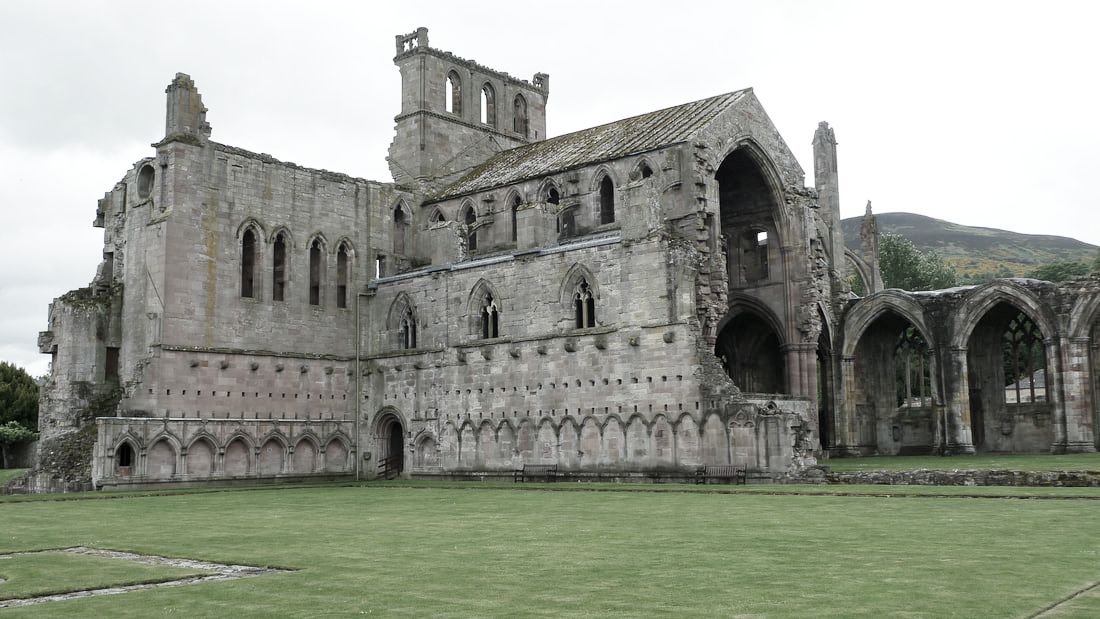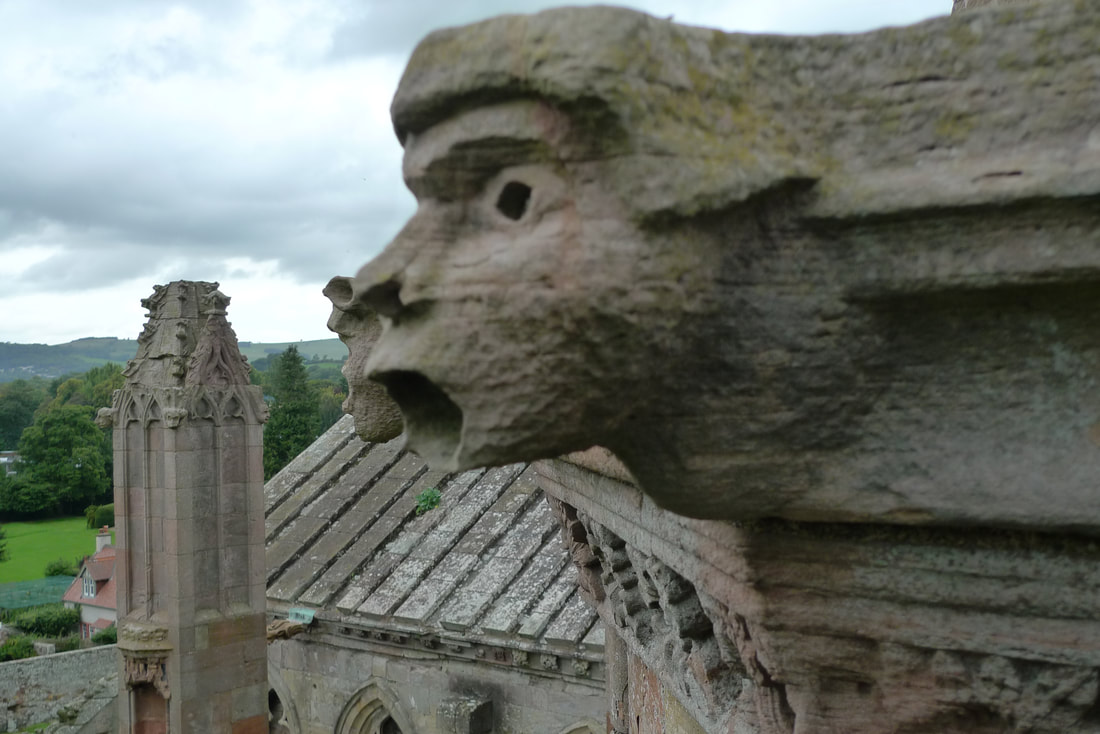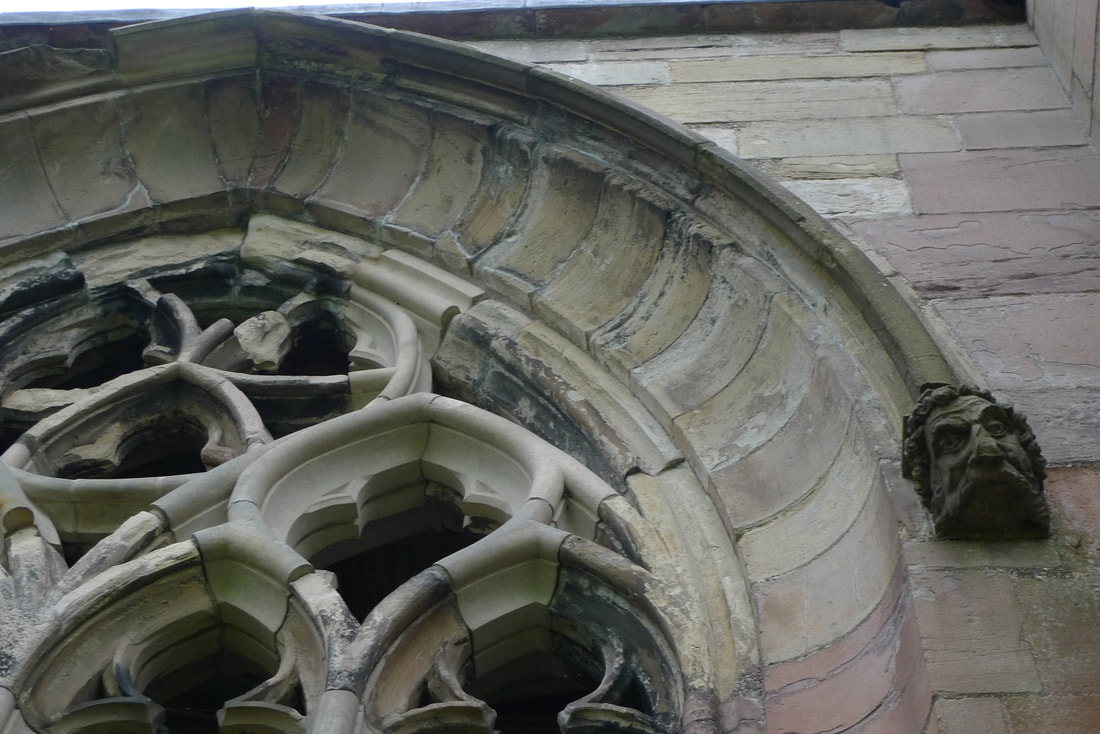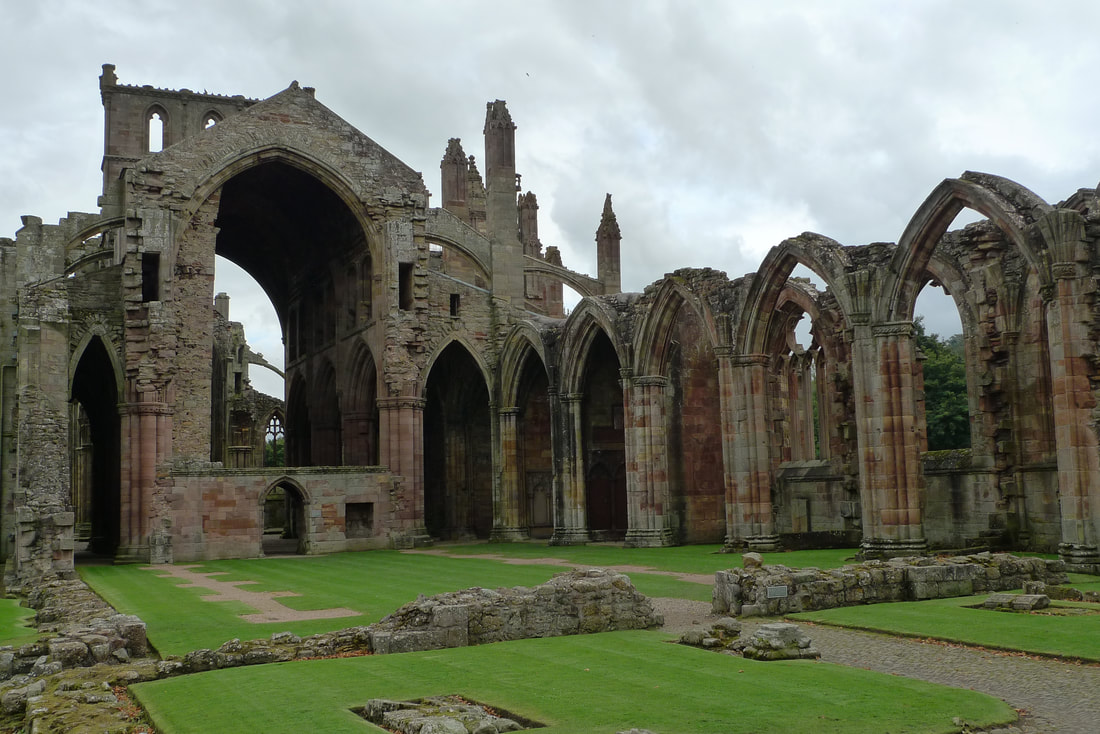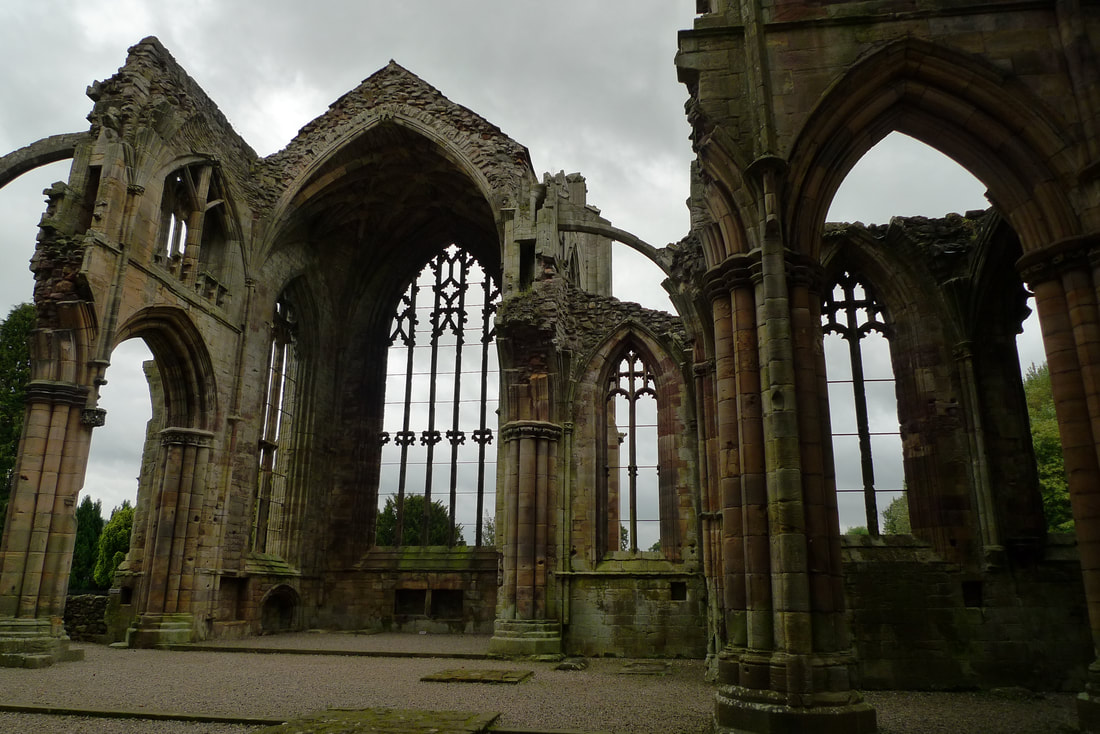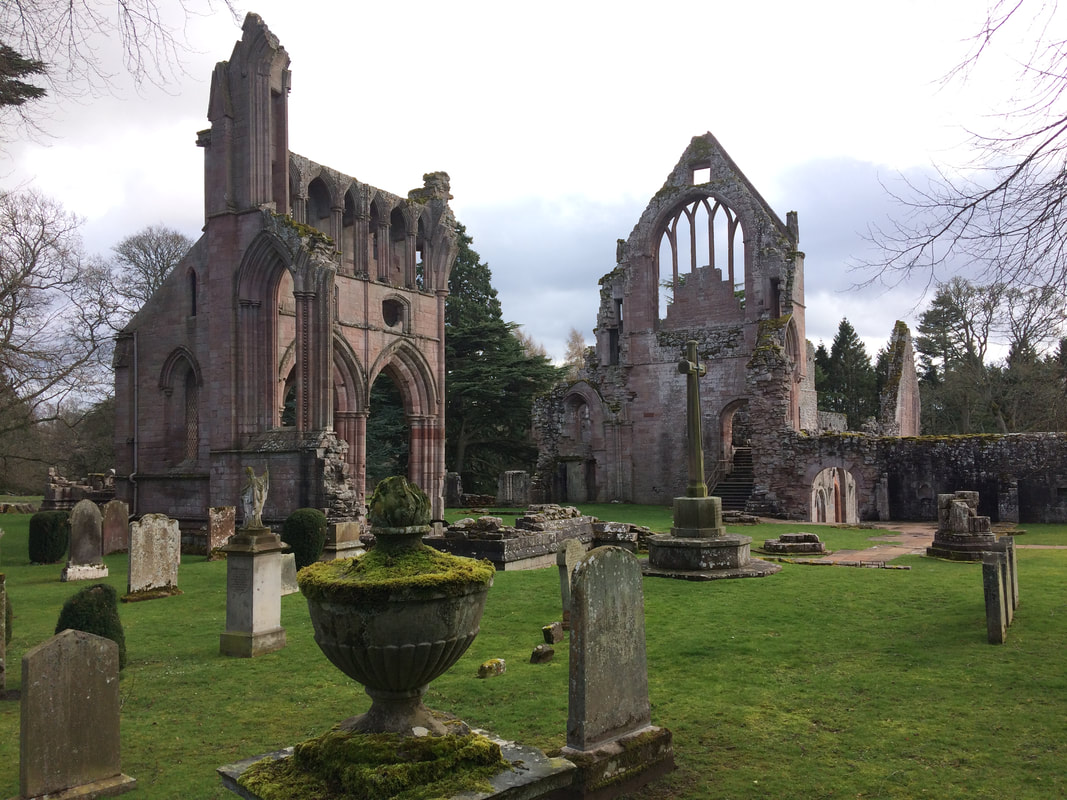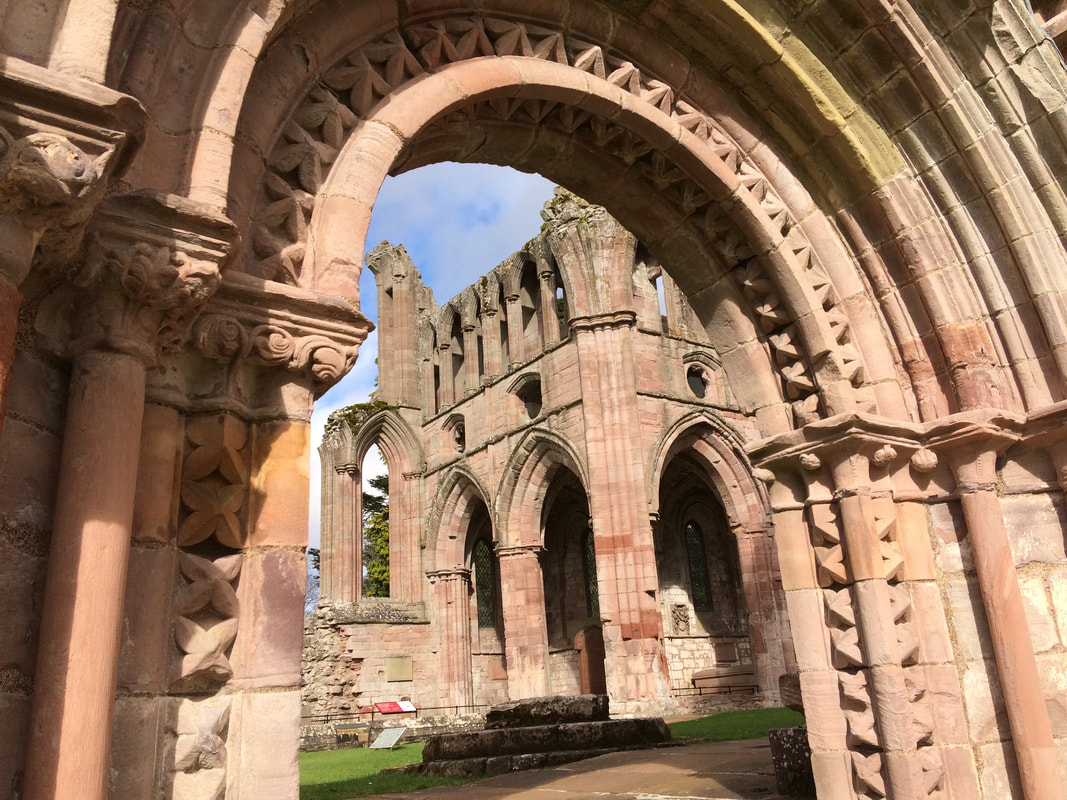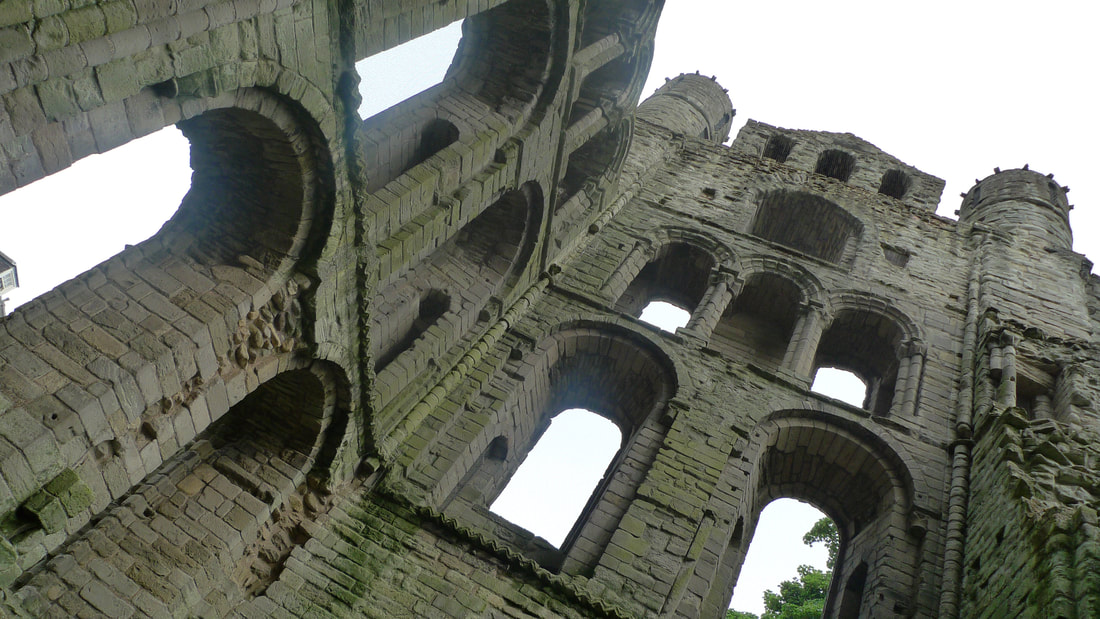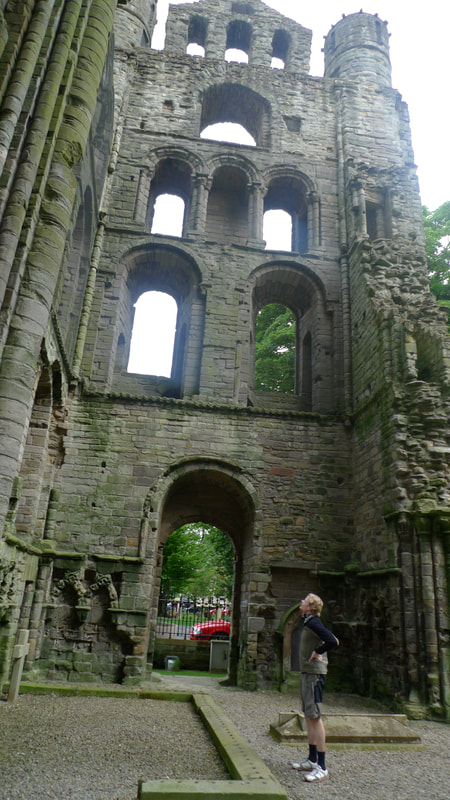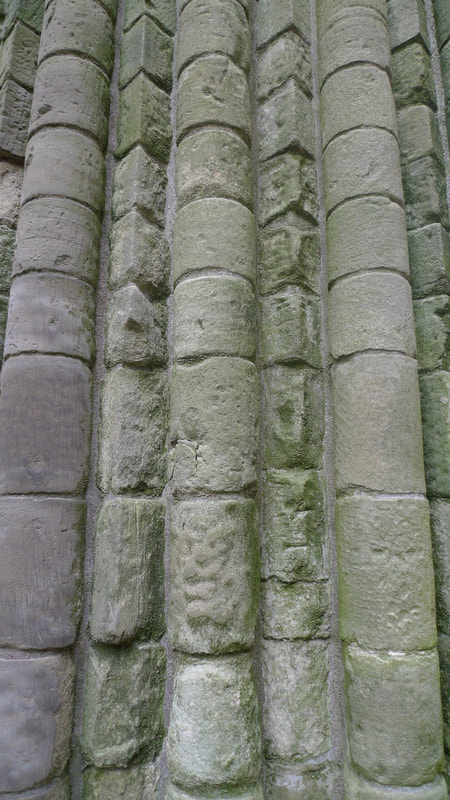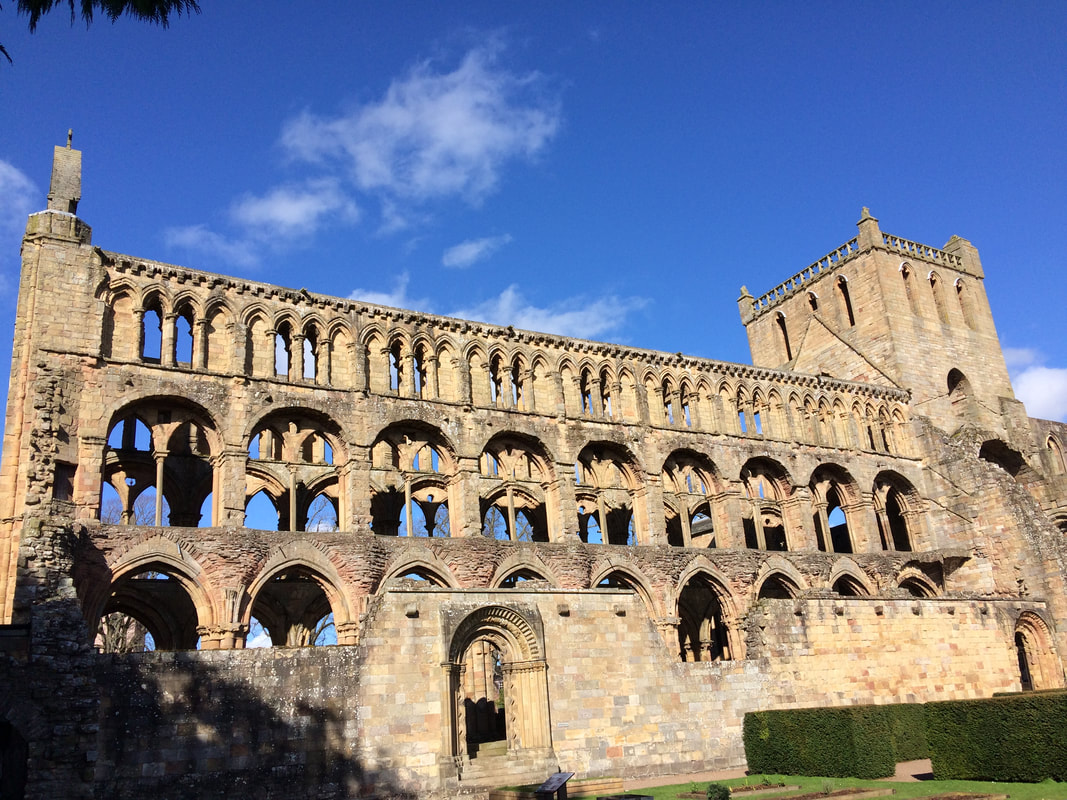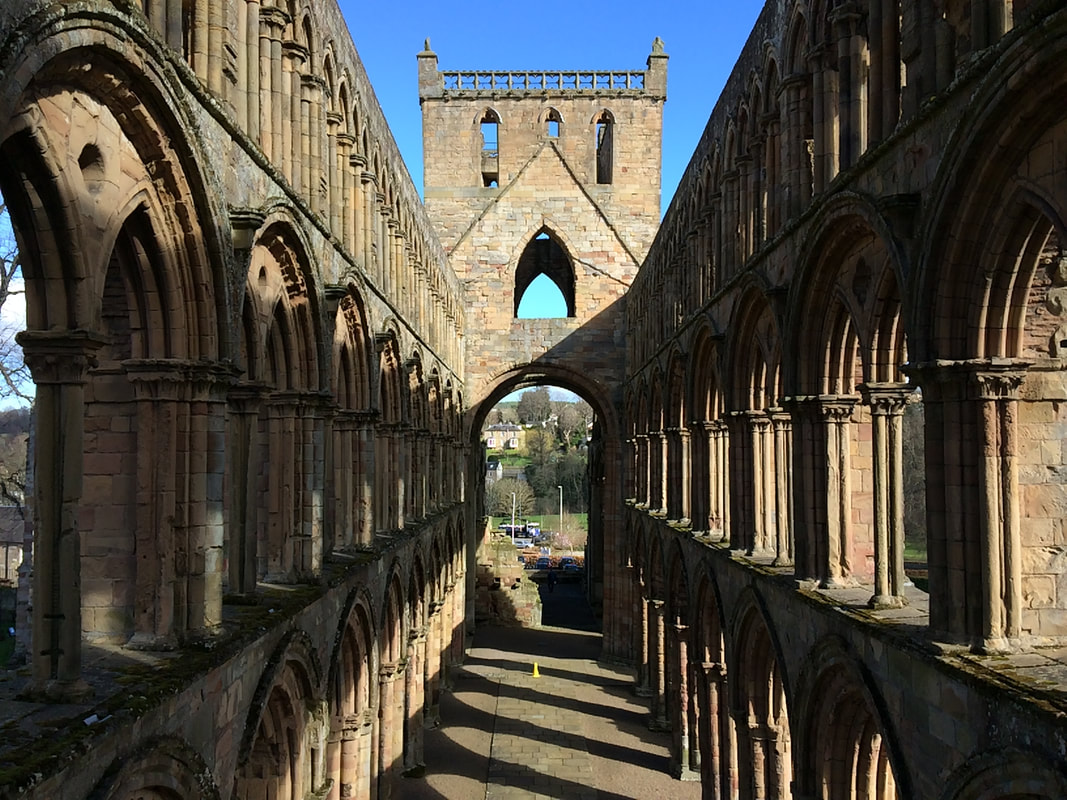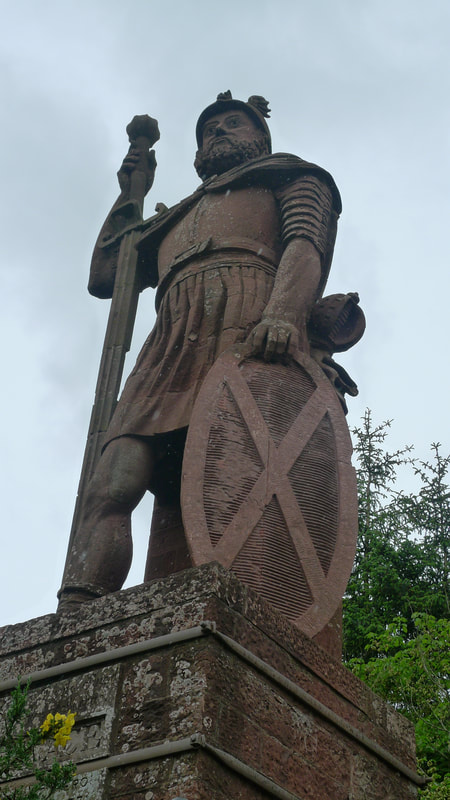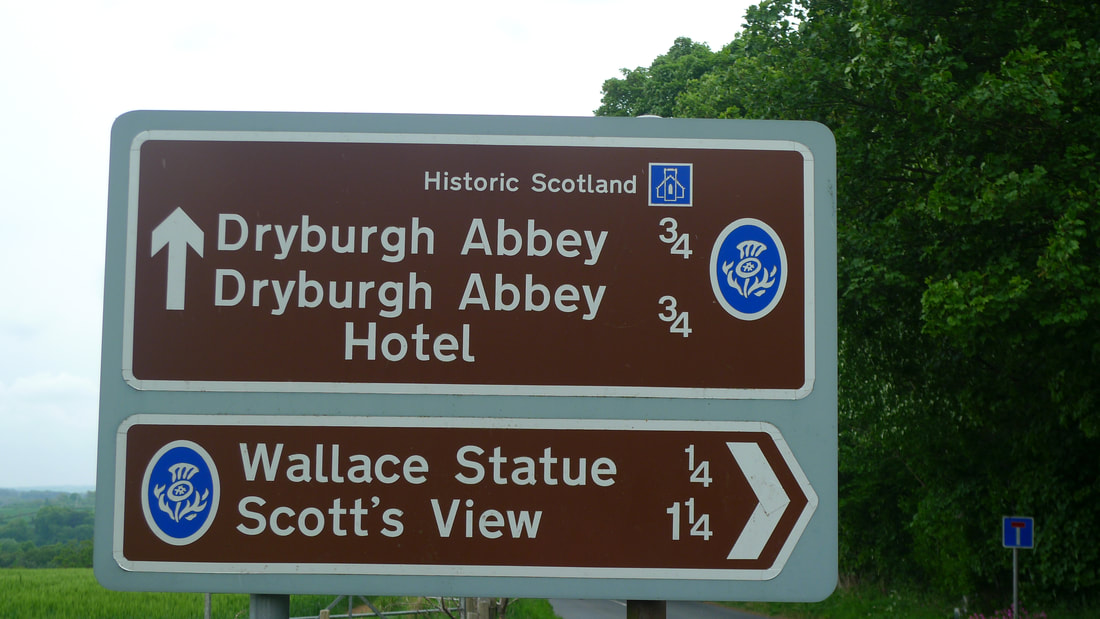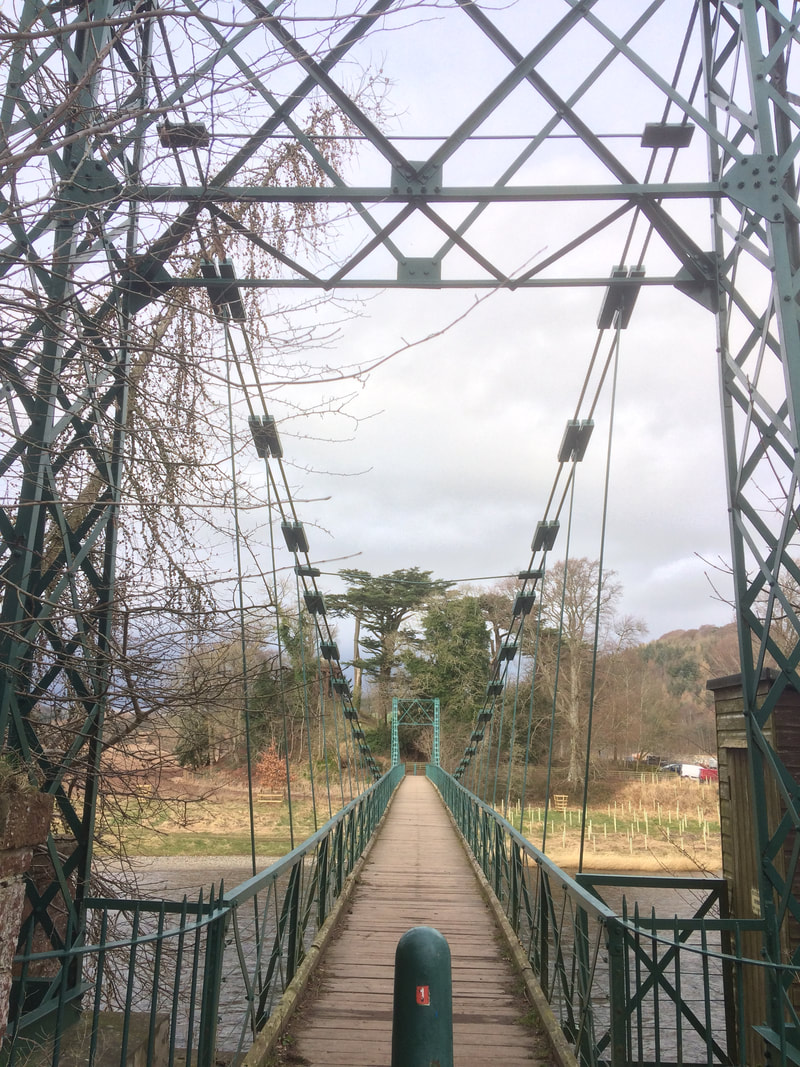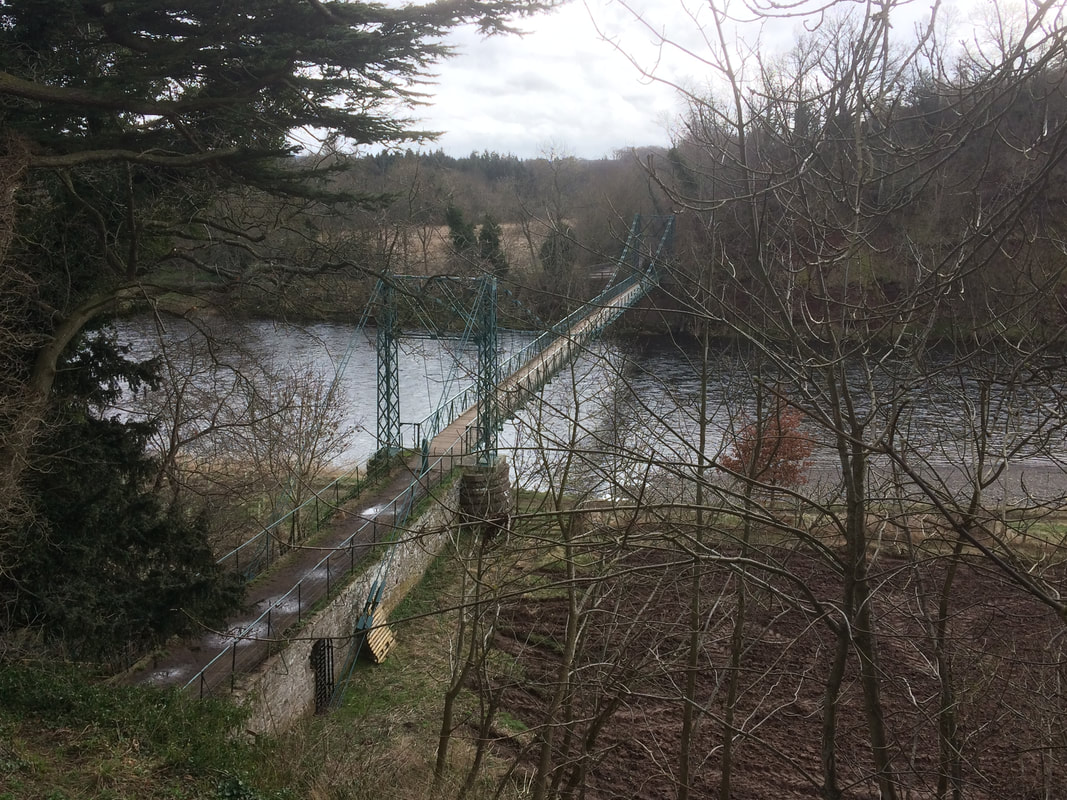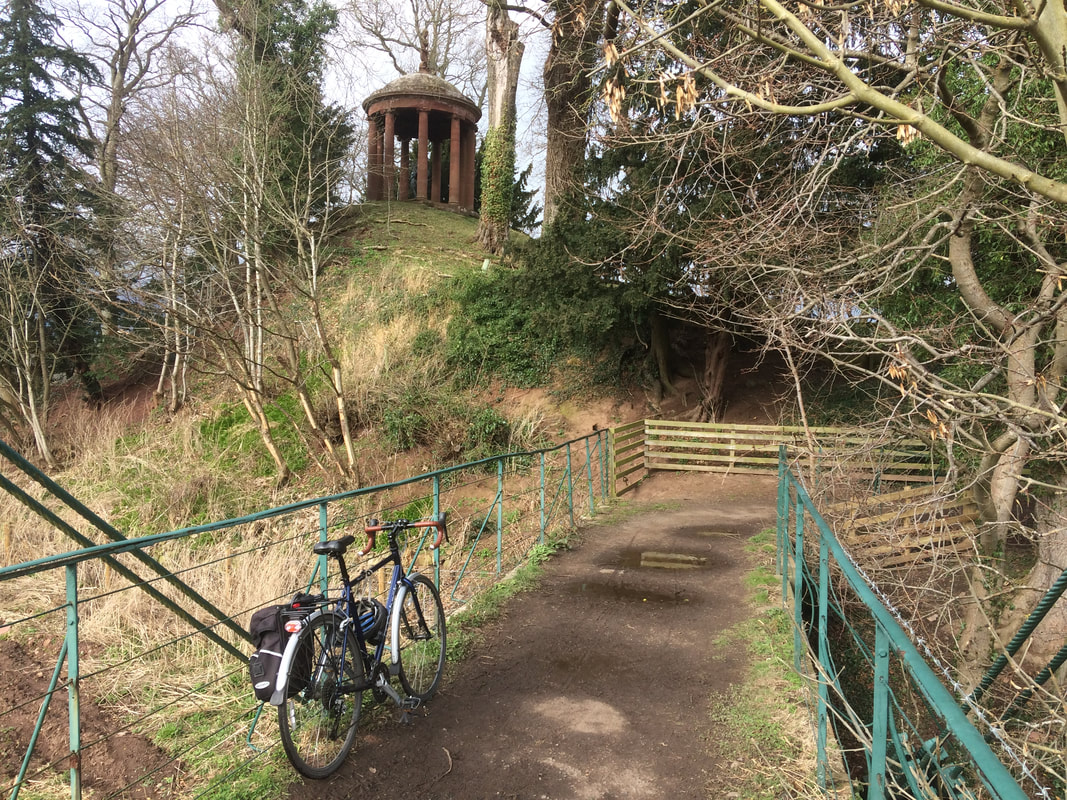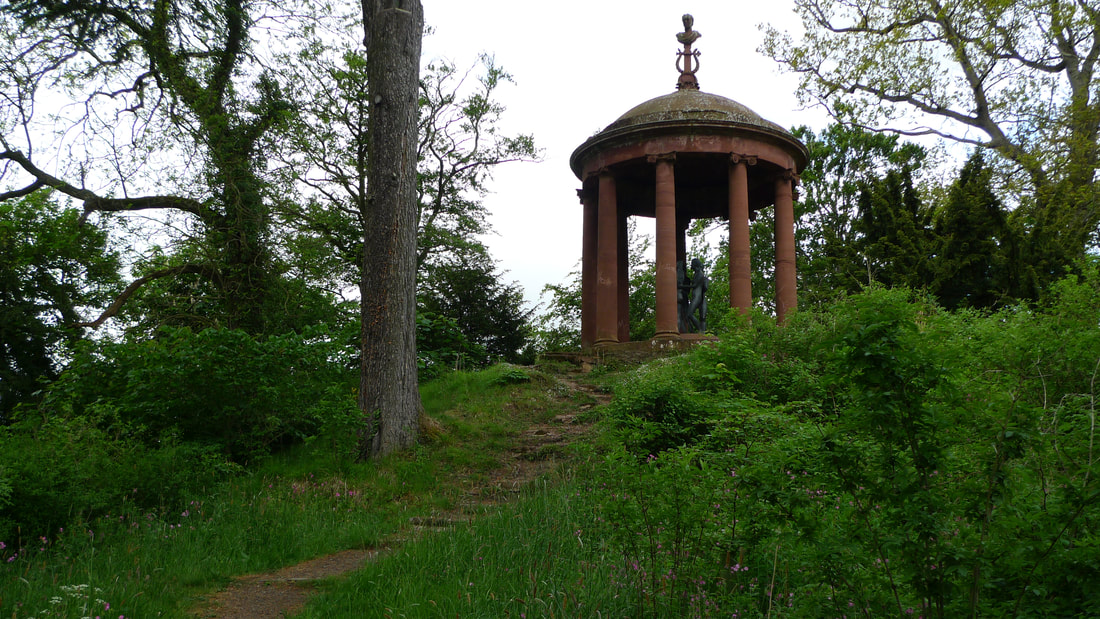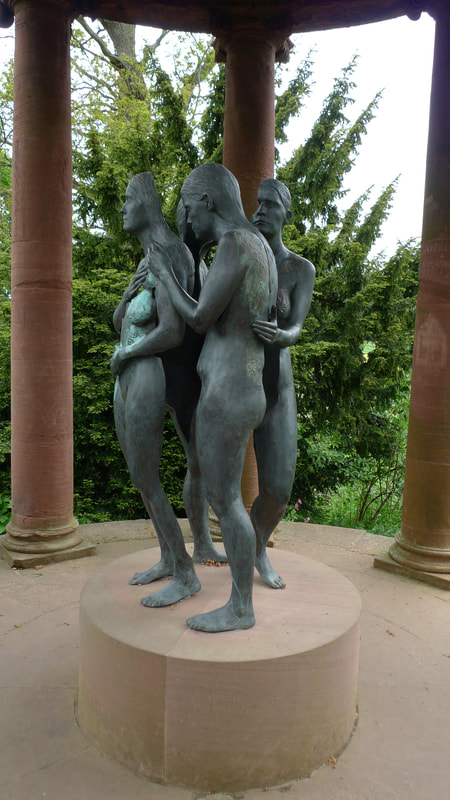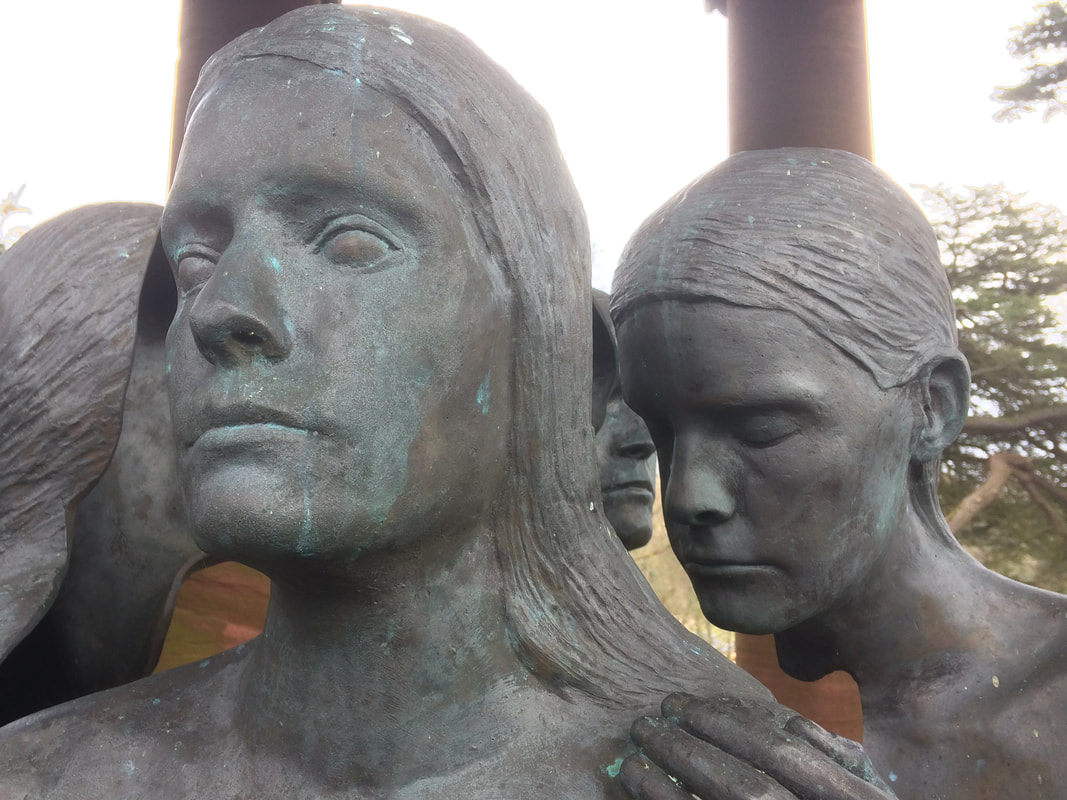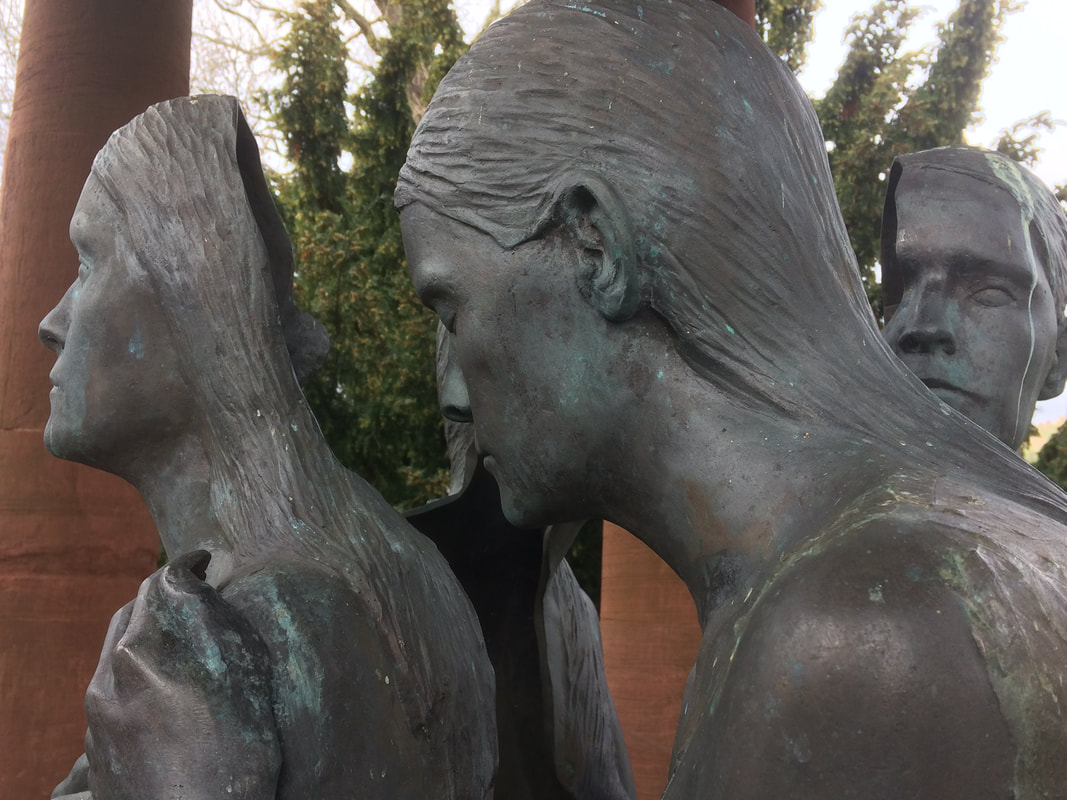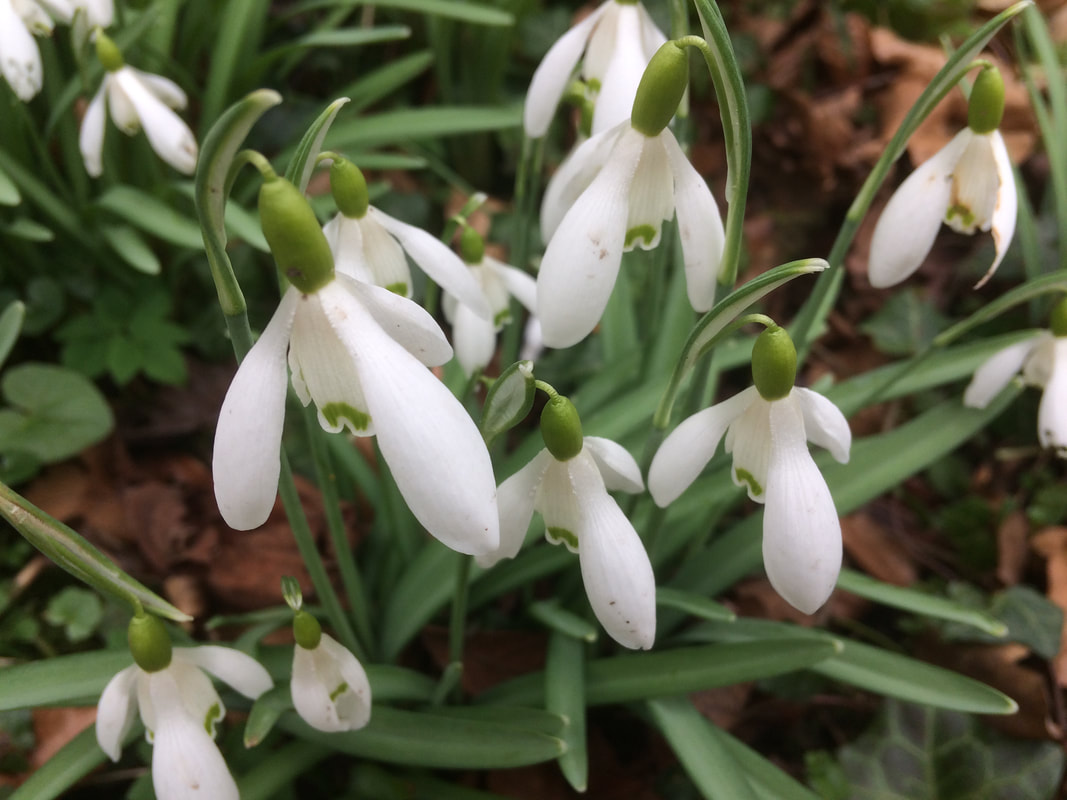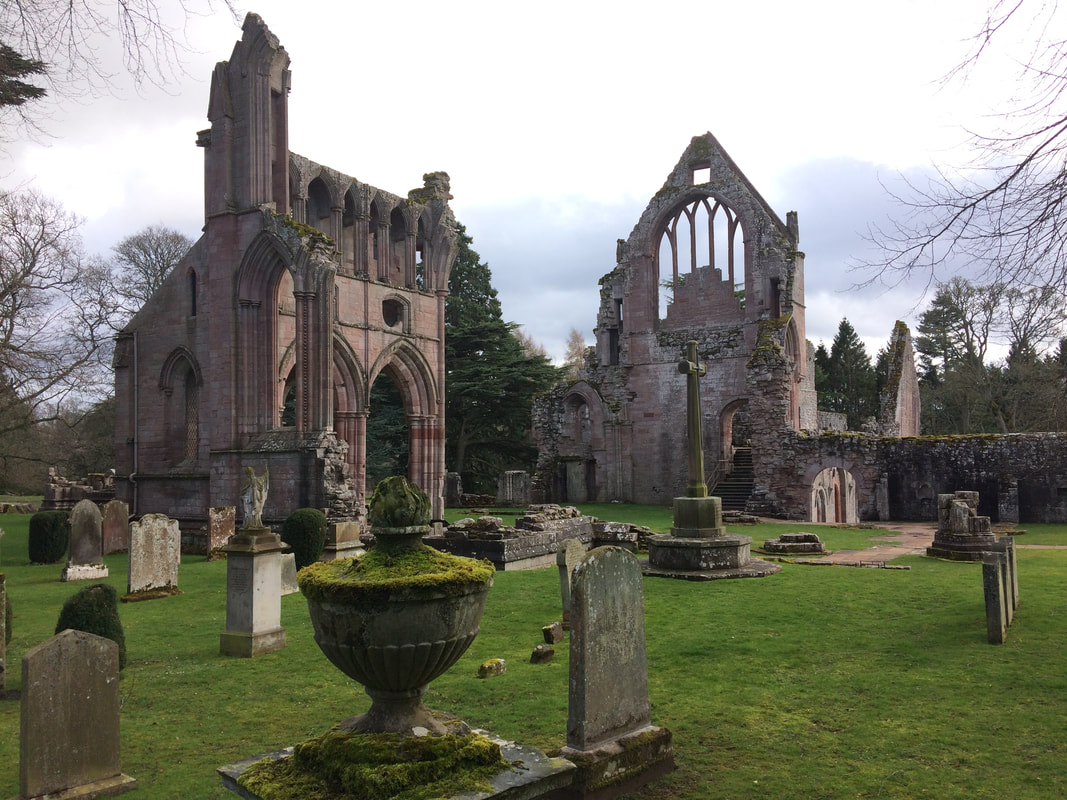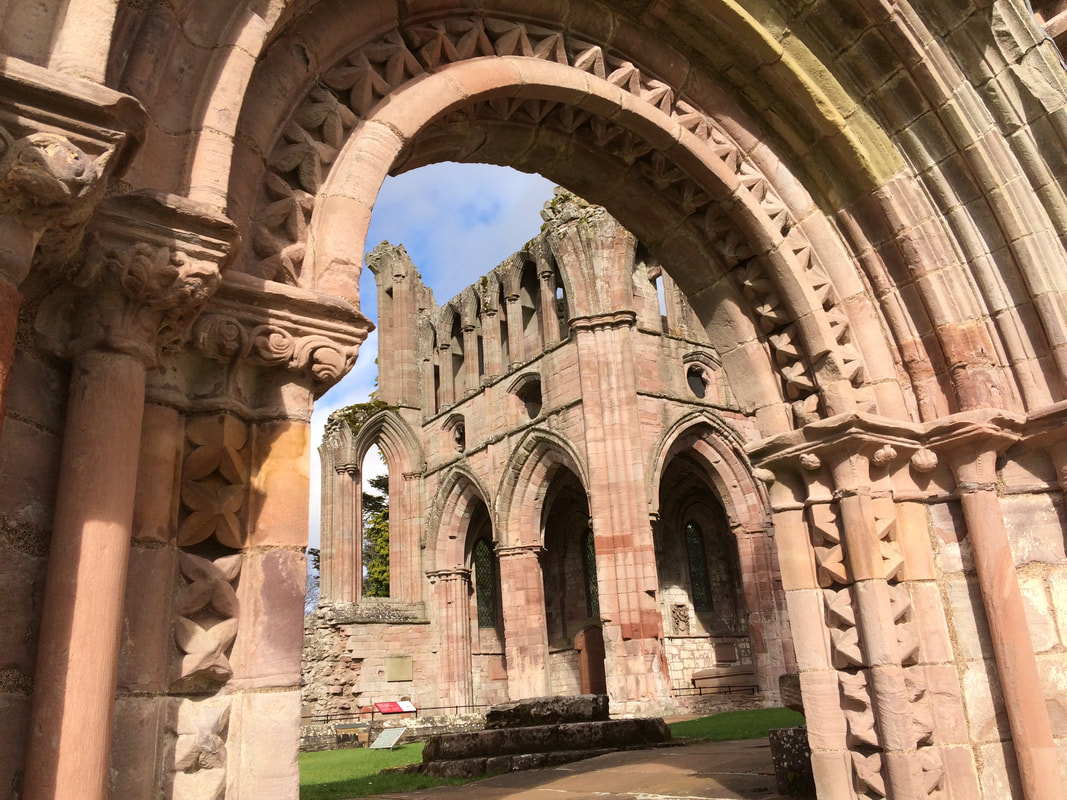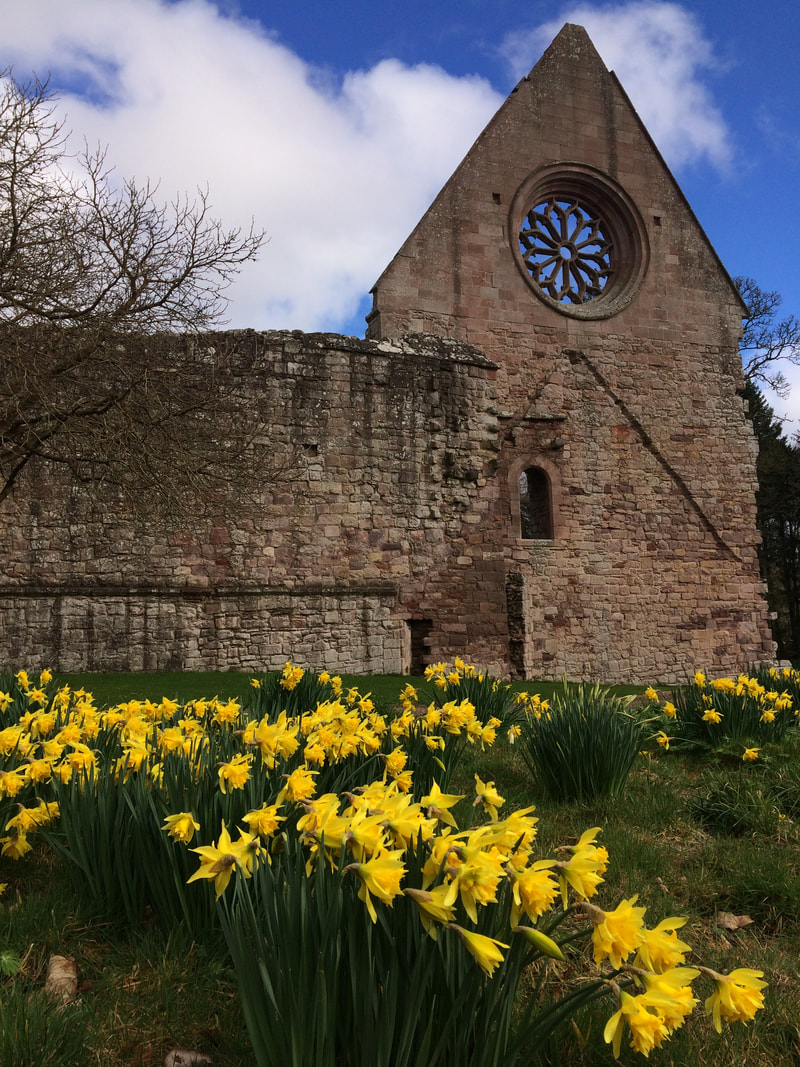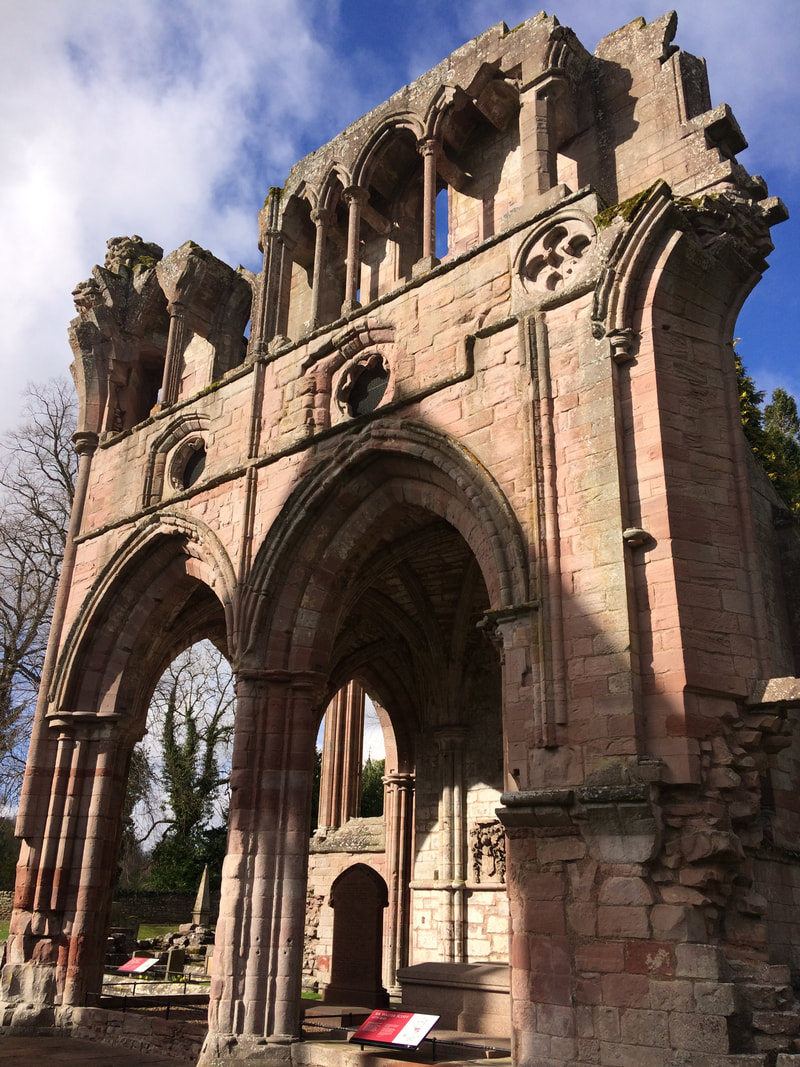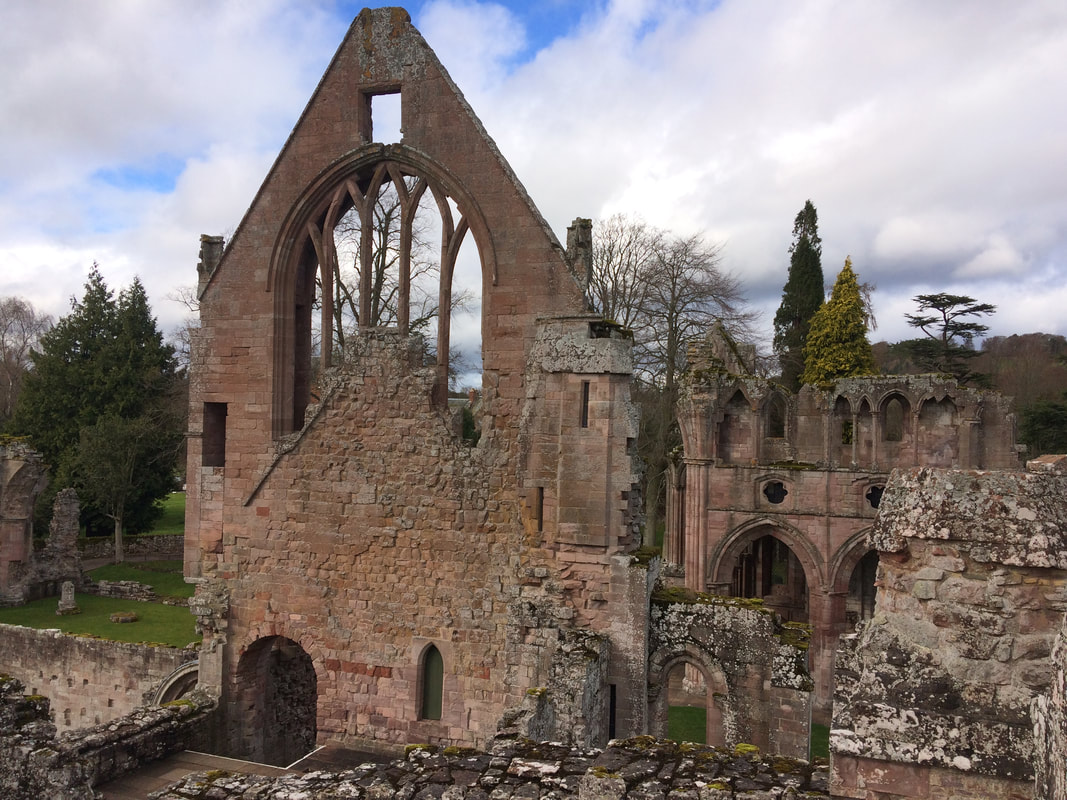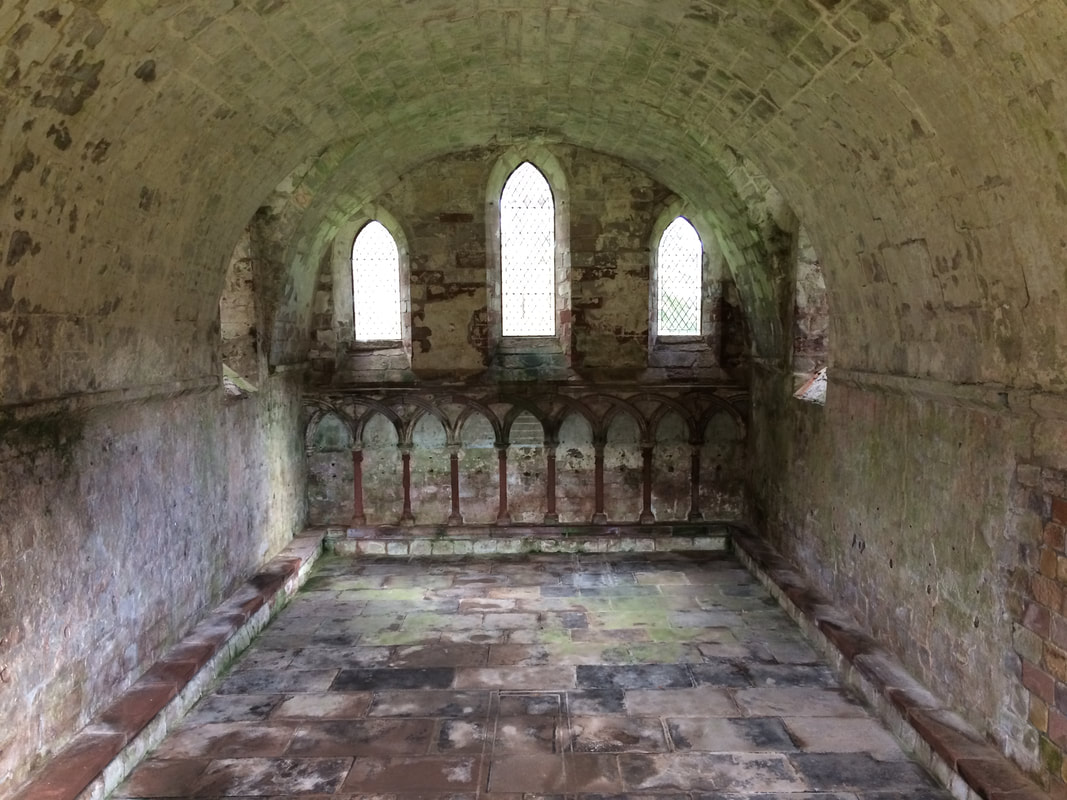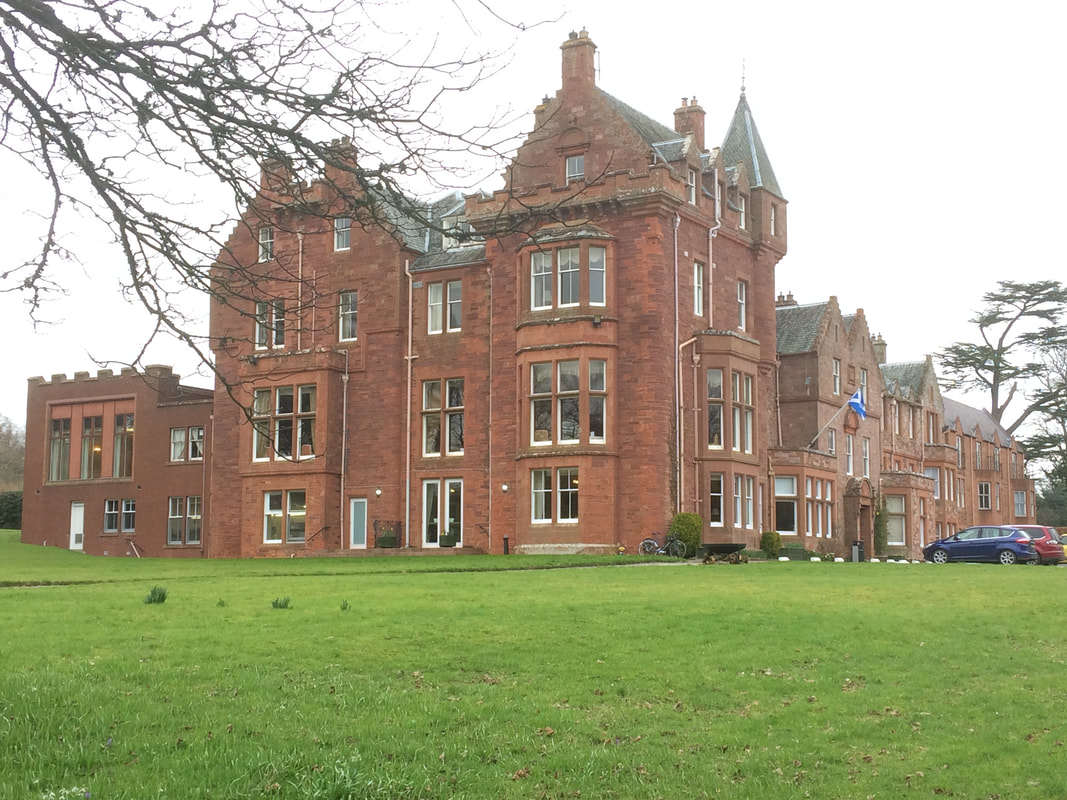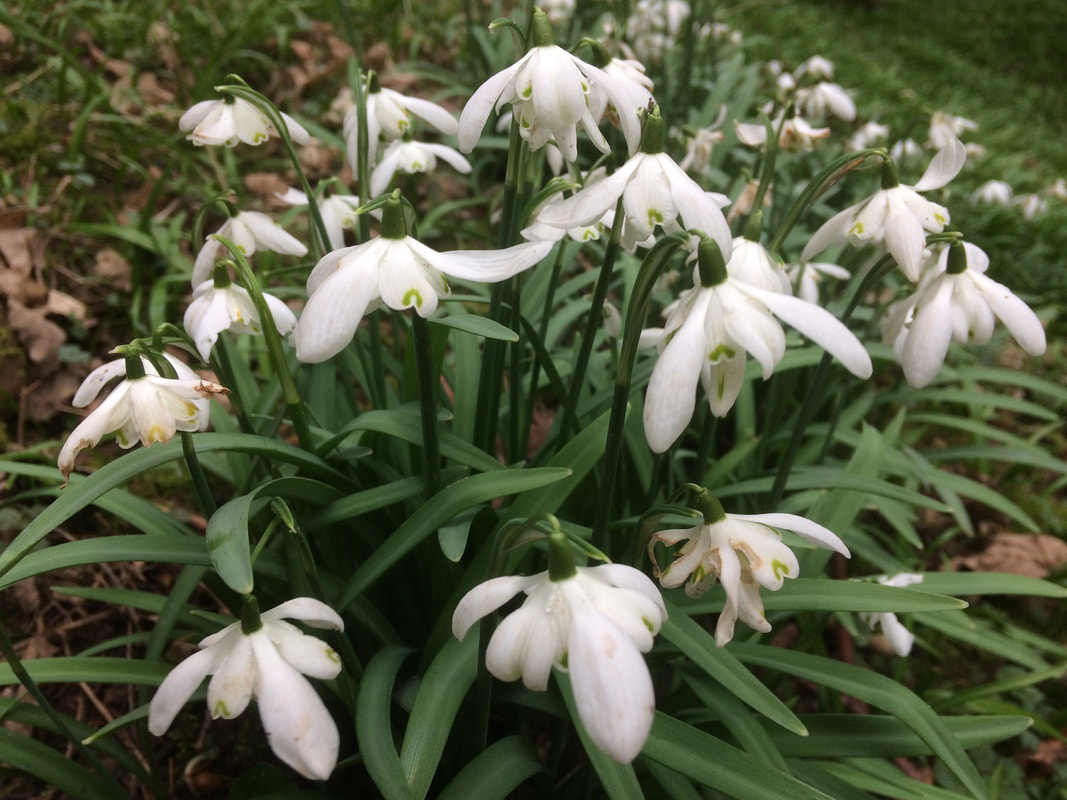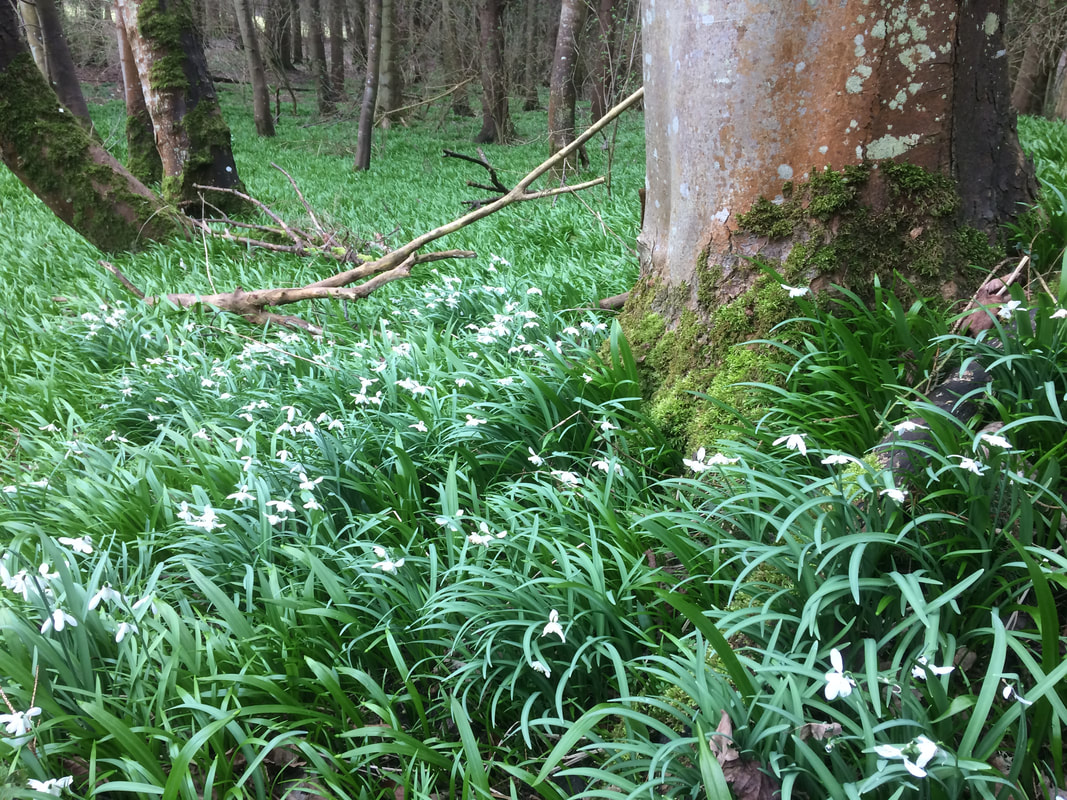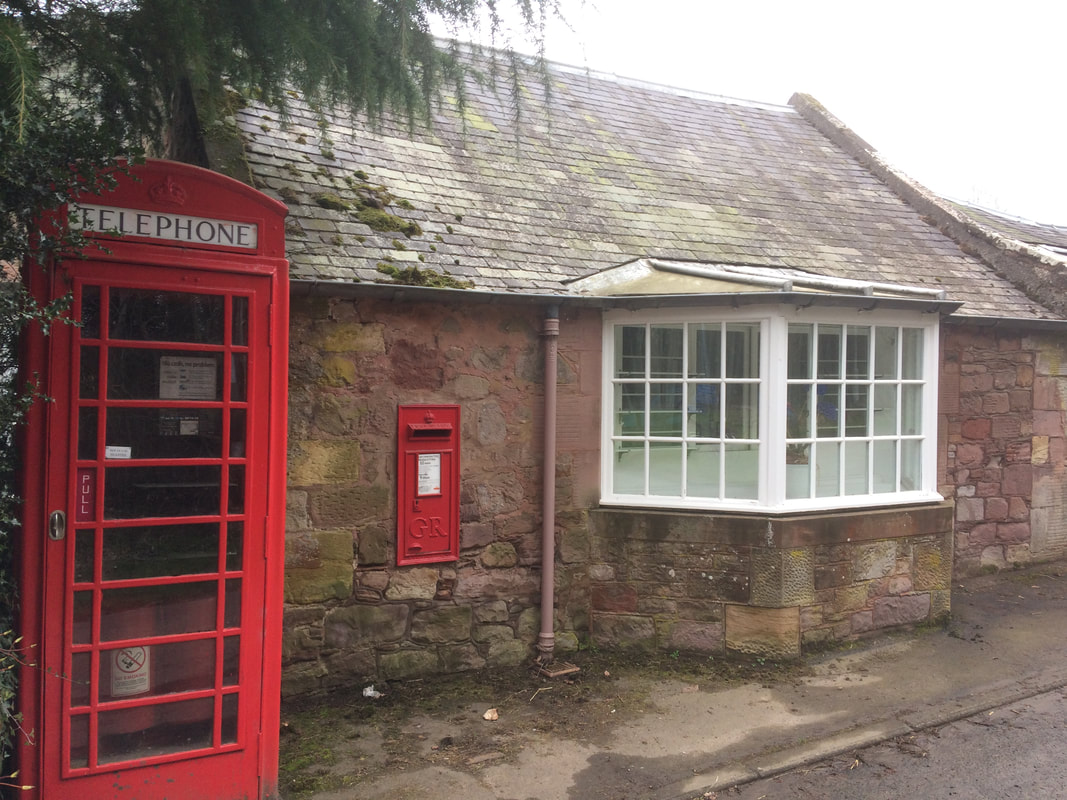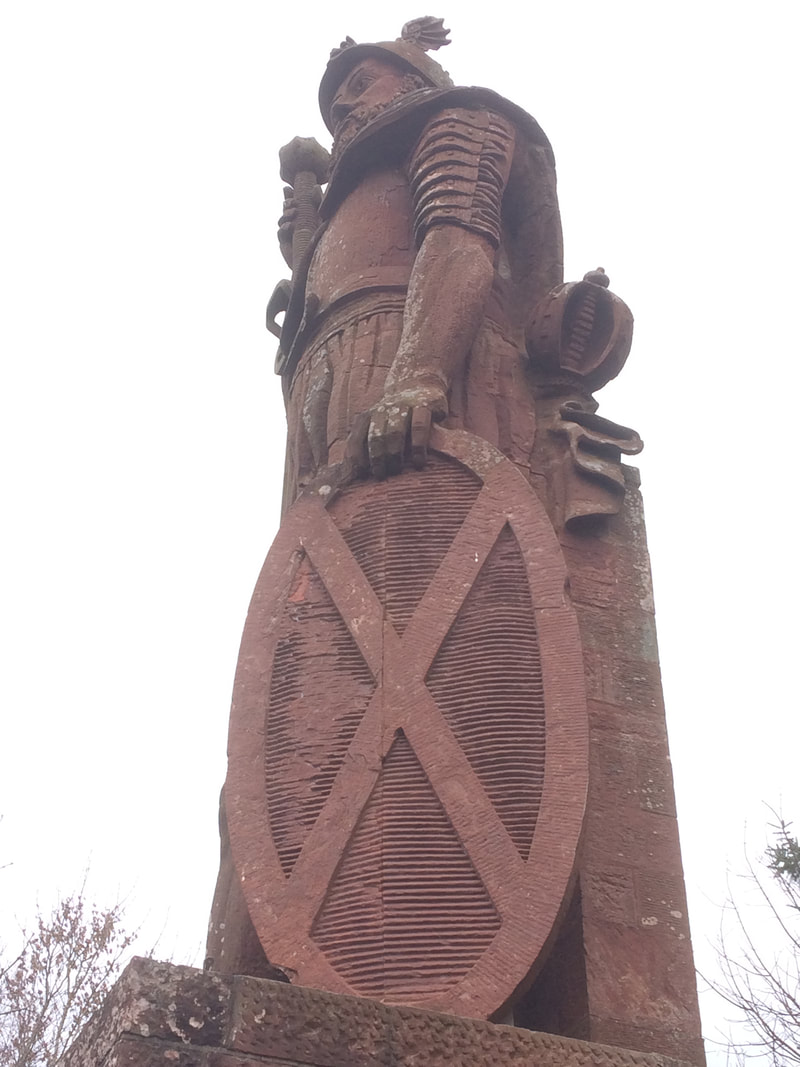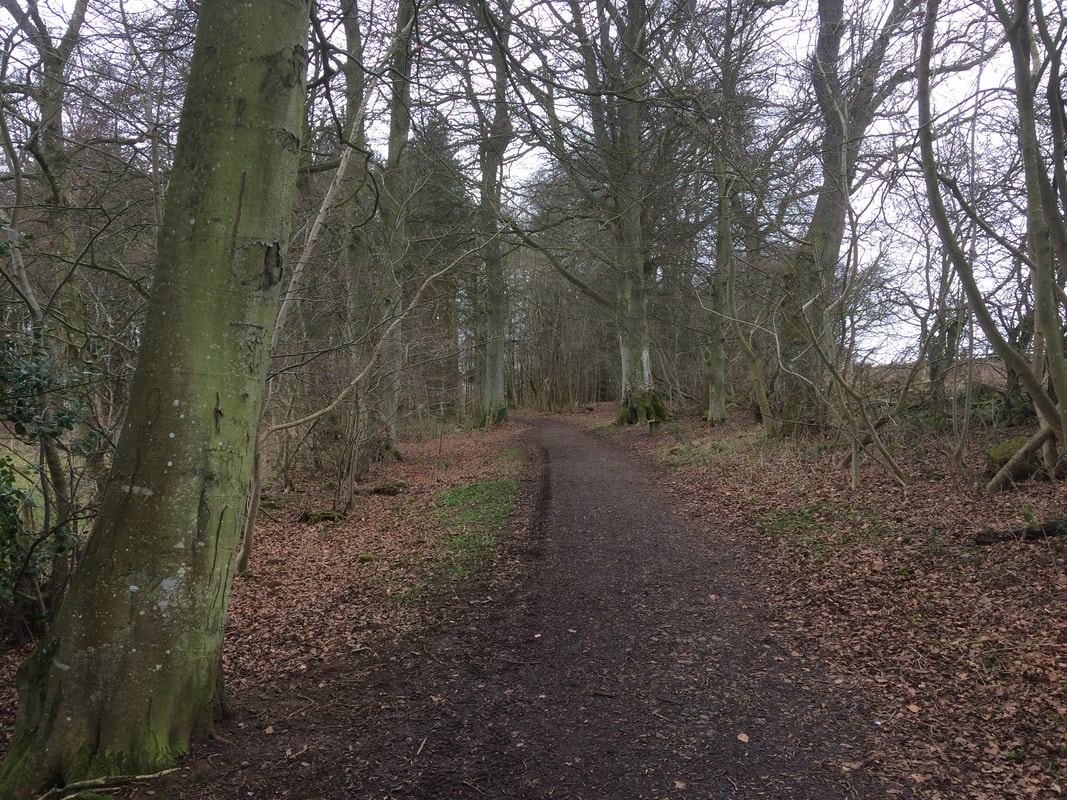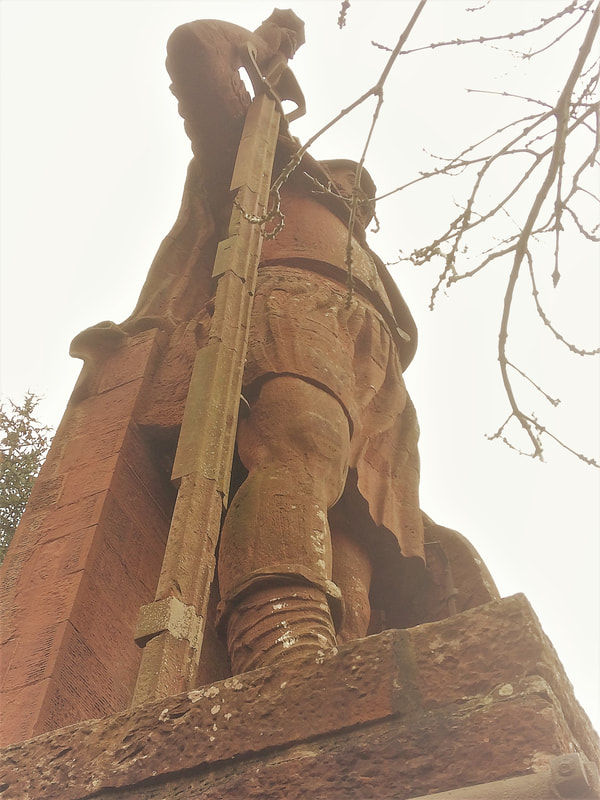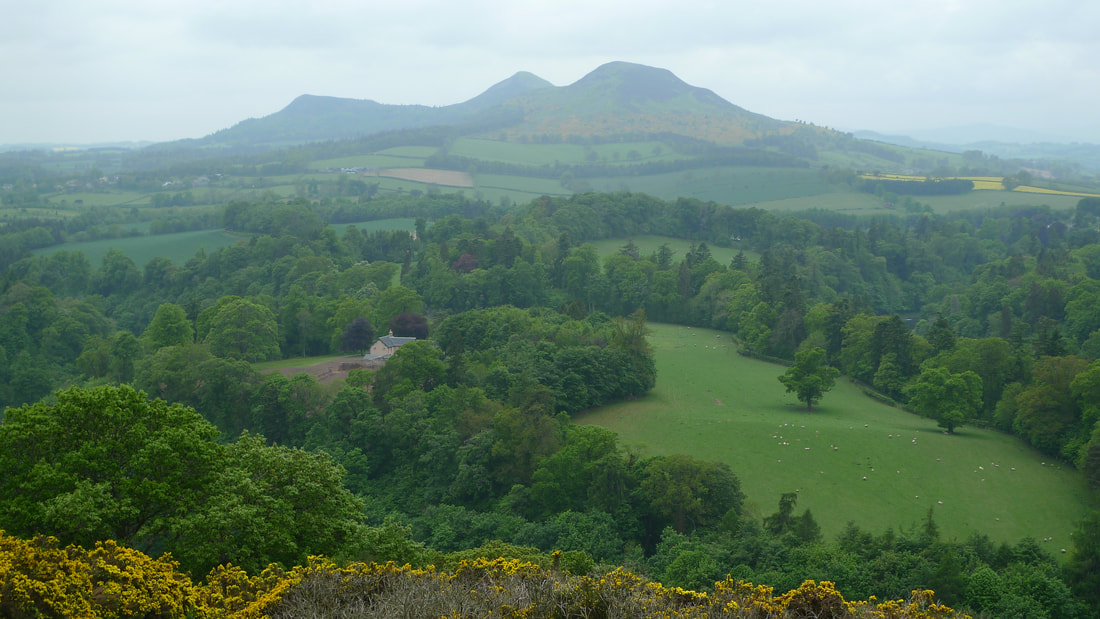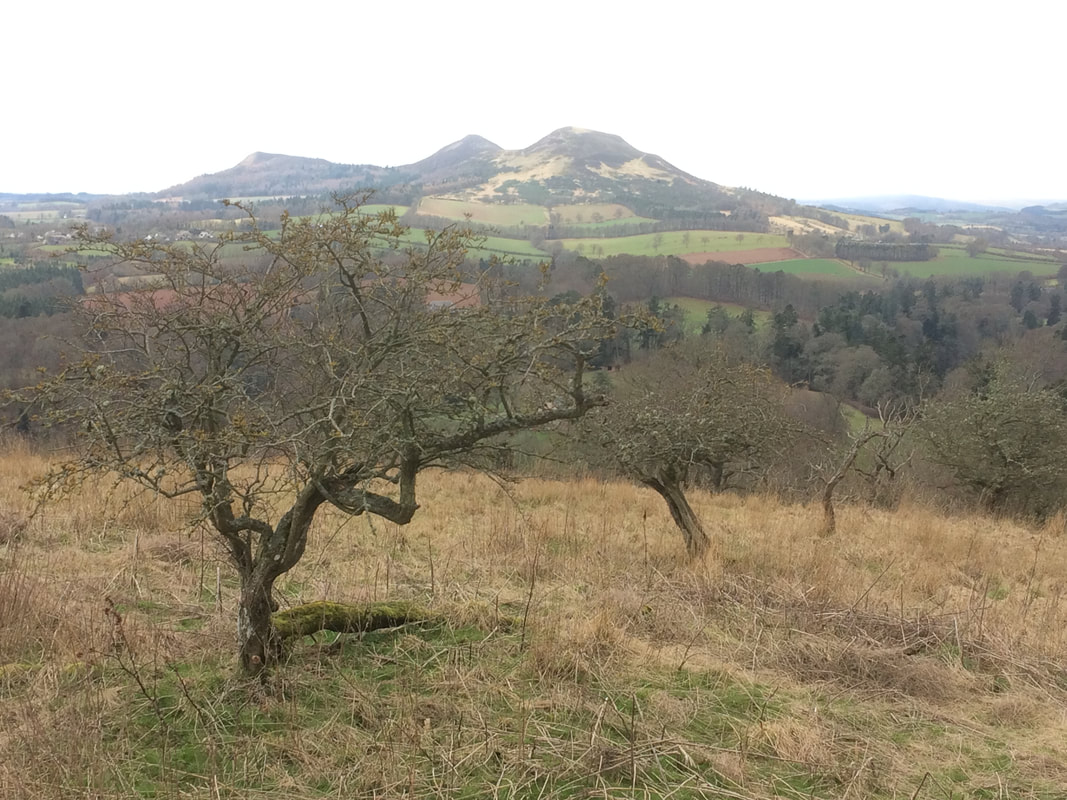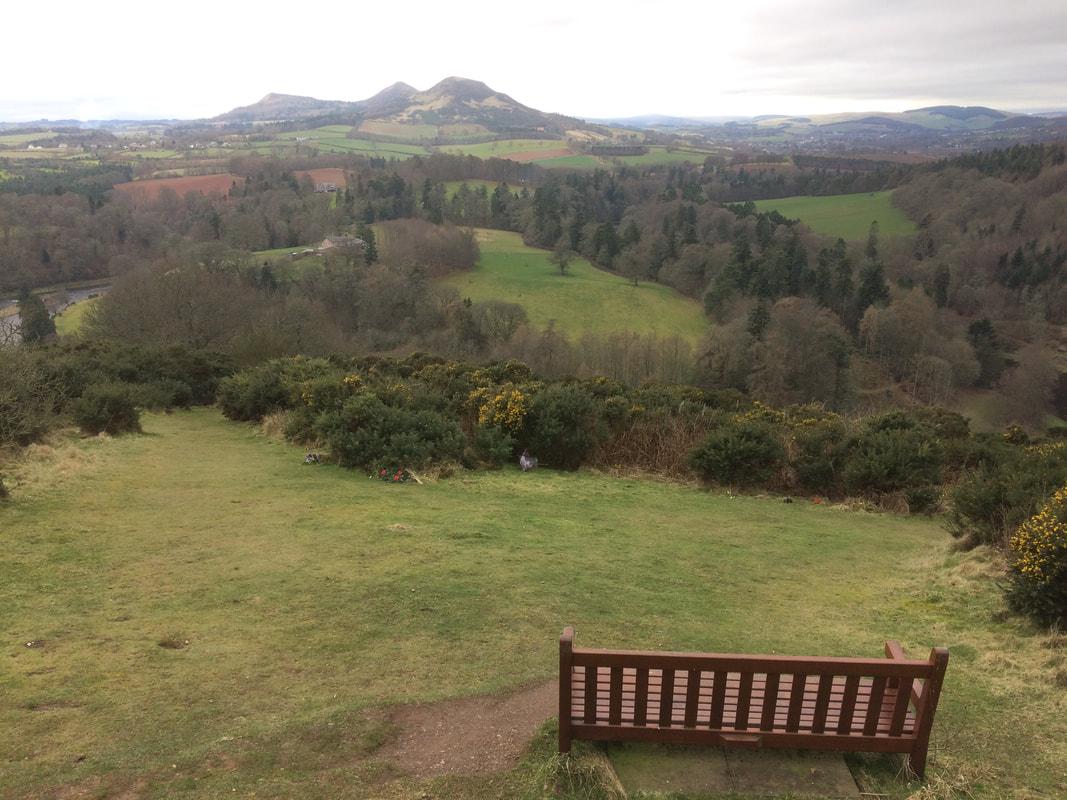|
The four abbeys in the Scottish Borders are one of Scotland's greatest collections of historical ruins. These are evocative places, full of history and architectural wonder. It is difficult to choose a favourite, but go and see them all and enjoy! They are linked by a walking route and a cycling route, so it is easy to plan an adventure to visit them.
1. Melrose Abbey
In terms of scale and architectural wonder Melrose is my favourite of the 4 abbeys. Famously, the abbey is the home of Robert the Bruce's buried heart. The abbey church, dating from the late 1300s, is a magnificent piece of architecture where the height of the ceiling is immense and difficult to stop looking up at. The quality of the stone sculpture is mesmerising and there is even a carving of a pig playing bagpipes.
Melrose is one of the easiest abbeys to get to. The Borders Railway, Scotland's newest railway line stops at Tweedbank (around 55 minutes from Edinburgh). From there it is about 1.75 miles from Melrose. There is a cycle path to Melrose directly opposite the station. It is such a short cycle ride that you might prefer just to walk there. Melrose itself is one of my favourite towns in Scotland and you can read my guide to what there is to see and do.
2. Dryburgh Abbey
If you like your abbeys to have tranquil, woodland settings then Dryburgh should be top of your list. The abbey is situated in a gorgeous little enclave with the River Tweed flowing by and a great selection of nearby attractions, including a suspension bridge and a giant William Wallace statue. This peaceful location makes it easy to imagine a canon's life of devotion and nothing to interupt this. The abbey is renowned as the burial place of Walter Scott, one of Scotland's most famous novelists. Earl Haig, the commander of British forces for part of the First World War, is also buried here. Although the abbey is a ruin there is a lot that has survived. The immense size of the windows and doorways is awe-inspiring and the quality of the stone carving incredible.
It will take around 30 minutes to cycle to Dryburgh Abbey from Melrose Abbey using National Cycle Network Route One. My blog has the details of this route.
3. Kelso Abbey
On first impressions this is the least impressive of the abbeys because a lot less has survived- it suffered a devastating attack from English invaders in 1545. It does not have the scale of Melrose or Jedburgh, but in its day this was the richest and the oldest of the 4 abbeys with spectacular Romanesque architecture. The remains of the great doorway are finely carved. It is also in the centre of Kelso, which makes for an impressive centrepiece in the town.
You can use National Cycle Network Route One to reach Kelso. It is 11.5 miles from Dryburgh Abbey.
4. Jedburgh Abbey
Built by King David I in the 12th century Jedburgh is perhaps the most photogenic of the abbeys. The scale and lavishness of the architecture is much more obvious than the other abbeys because it is really just the roof that is missing. A spiral staircase leading to a balcony viewpoint provides a marvelous vista of the nave and the fine stone construction. The abbey sits on high ground over a river and the view of it from the other side of the river is particularly impressive. If you can arrive into Jedburgh this way it means that the abbey suddenly comes into your view and you are going to think, if not say, 'wow'.
Jedburgh Abbey is the furthest to reach by bicycle. The 4 Abbeys cycle route links Jedburgh to Melrose and this route is about 20 miles. It is not a direct route as it avoids busy roads. If you are planning to visit all of the abbeys then the 4 Abbeys cycle route is 55 miles and quite challenging, but can be done in one day. However, I recommend taking longer as this allows for much more time to spend enjoying the abbeys.
Kelso Abbey is free to visit and there is an entry fee to visit the other three. All of the Abbeys are in the care of Historic Environment Scotland and their website has current entry fees and opening hours. For ideas of more places to visit in the Scottish Borders visit my Scottish Borders page
2 Comments
A Huge William Wallace, an Abbey, a Temple and a Famous View. A Day Out in the Scottish Borders11/10/2018
For a great day of exploring in the Scottish Borders take the train to Tweedbank and join the cycle path right at the station. It only takes 8 miles of cycling to see an abbey, an enormous statue of William Wallace, an outdoor sculpture and one of Scotland's finest views.
Getting There The Borders Railway makes it easy to visit the Scottish Borders. The last stop on the line, Tweedbank (around 55 minutes from Edinburgh), has a cycle path at the station. This will take you on a mostly traffic-free journey to the attractions highlighted on this blog.
After 1.75 miles you will arrive in Melrose, one of Scotland's most charming towns. Read my blog about Melrose for ideas of things to see and do in the town.
Just after Melrose the route takes you onto a road that is closed to vehicle traffic. This involves a steep climb, but this is followed by a smile-inducing descent. After passing through Newtown St. Boswells the route requires a crossing of the busy A68, but this is a simple case of pushing the bike over to the large island in the middle of the road and then pushing it over to the other side. This will set you off on a minor road that descends towards the River Tweed. Dryburgh Suspension Bridge Here you will find a suspension bridge, built by the Earl of Buchan. In fact, this Earl had a hand in most of the things that you will see on this journey. There is something exciting about crossing a bridge on a bicycle- the river views being seen from an elevated position and the fact that you can easily stop in the middle and watch the water flowing beneath you. This bridge has a walkway of worn planks that shoogle as bicycle tyres pass over them.
Temple of the Muses
On the other side of the bridge you will notice a round Greek-looking structure on top of a hillock, among woods. This is the Temple of the Muses. It can be reached by following the cycle path around the corner where you will find a gate and a short path up to the temple.
The temple was built by the 11th Earl of Buchan to honour the Scottish Borders poet, James Thomson. Thomson lived in the 18th century and famously penned the lyrics to 'Rule, Britannia!' The bust on the top of the temple is Thomson.
Inside the temple there is a sculpture of bronze figures, representing the Four Seasons which was a series of poems by Thomson. The sculpture was installed in 2002- prior to this there had been a statue of Apollo with 9 muses that went missing. The naked figures are clasping each other in a supportive embrace. All have different facial expressions. I was fascinated by the face with the eyes closed and head looking down, clearly deep in thought. What is she thinking?
This is simply a lovely spot to spend a bit of time. The bridge, the temple, the sound of the river- it is perfect. In the Springtime there are clumps of snowdrops to add a touch of panache to the woods around the temple.
Dryburgh Abbey
Just a two minute cycle will bring you to the next attraction on this tour. It is a classic ruin in the countryside, like something from one of those romanticised 19th century paintings.
The abbey is renowned as the burial place of Walter Scott, one of Scotland's most famous novelists. Earl Haig, the commander of British forces for part of the First World War, is also buried here.
Although the abbey is a ruin there is a lot that has survived. The immense size of the windows and doorways is awe-inspiring and the quality of the stone carving incredible.
I put my hand on the stone. It felt sturdy and strong and must have taken some effort to destroy. Successive attacks by English armies left Dryburgh in its present state. It was burned down in 1322, then re-built, then smashed up again in 1385, re-built again, and destroyed a final time in 1544.
The same Earl of Buchan who built the Temple of the Muses acquired the ruins in 1786 and took them into his care. He saw himself as a champion of Scotland's heritage and worked to preserve what was left of the building. He is also buried here.
The site is incredibly peaceful and gives a good impression of a canon's life of devotion and tranquility. Visit on a weekday in spring and there will be few other visitors. There will be birdsong and daffodils to brighten your walk.
The Chapter House is one of the best preserved parts of the building as it still has a roof and walls. Inside there was Gregorian chant music on a sound system and I took a seat to listen and imagine the life of a canon. They took a vow of silence and had to pray eight times a day, even in the early hours of the morning. If they looked sleepy an official would shine a lantern in their face. The canons had piss-pots under their robes so that they could relieve themselves without interrupting their duties.
Coffee at Dryburgh Abbey Hotel
Next to the abbey there is a baronial hotel. It must be a fine place to stay with its large bay windows, riverside location and garden walks, but I came for the coffee. There are lounges with sofas and armchairs that make for a relaxing cappuccino destination. The woods next to the hotel are thick with snowdrops in the spring.
Gigantic William Wallace
Do you want the good news or the bad news? Good news is that the next item on this tour is only 5 minutes away. The bad news is that it is mostly uphill. However, it is worth it to see the incredible William Wallace statue; the very first Wallace statue in Scotland. On leaving Dryburgh you will pass this pretty ensemble of a red telephone box, red post box and stone cottage:
Wallace is one of the most famous figures in Scotland's history, largely as a result of the 1995 Mel Gibson film. The same Earl of Buchan who built the temple and the bridge was also a big fan of Wallace and he commissioned the statue.
Leave the bike in the car park (there are racks) and take the 5 minute walk through the woods.
I was taken aback by how big this statue is. It looms up from the woods. This Wallace has a kilt and legs with bulging muscles. He carries a shield with a Saint Andrew's cross and his sword is as long as he is tall. I am sure the intention is heroic, but I think the curly beard and piercing eyes make it appear somewhat cartoonish.
Scott's View
1.2 miles of cycling from the Wallace statue will take you to one of Scotland's most beautiful view points. Scott's view is named after literary giant Sir Walter Scott- this was one of his favourite places in the Scottish Borders.
The view encapsulates all that is beautiful about this part of the Scottish Borders. A valley of trees, fields and river that rises to the three peaks of the Eildon Hills.
It is easy to see why Walter Scott loved it here. In fact, he came here so often that his horses knew to stop without being asked to.
The cycle is uphill with the final stretch on a twisty road. The view is already magnificent even before you reach the top, so you will be tempted to stop numerous times to take it all in. Once at the top you will find a lay-by so that cars can stop. There are benches for those who would like to sit for a while.
Every time that I come to this view I have to pinch myself that it really is this easy to reach from Edinburgh, using the train and a bicycle.
Scott's View features in my video about cycling in the Scottish Borders:
For more ideas of places to visit and cycle routes in the Scottish Borders visit my Scottish Borders page
|
Categories
All
Archives
July 2024
|

